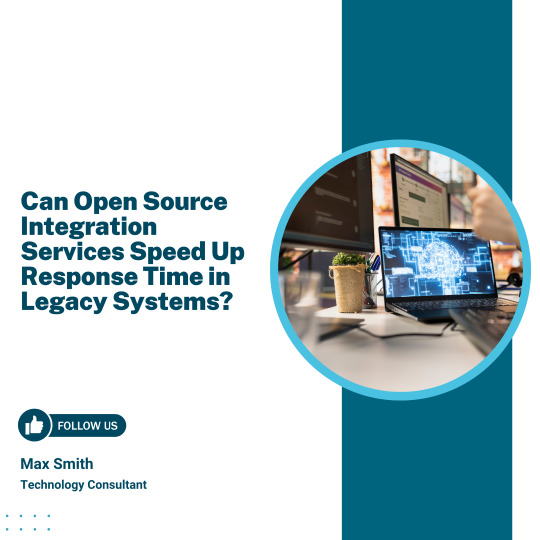#Logistics software development cost
Explore tagged Tumblr posts
Text

How much does it cost to build a Logistics app?
The cost of building a logistics app depends on factors like features (real-time tracking, route optimization, payment gateways), app complexity, and development team expertise. Advanced functionalities like AI-driven analytics or multi-location tracking can increase the cost. For a feature-rich logistics app tailored to your business, USM Business Systems is the best mobile app development company offering top-notch services.
USM Business Systems
Services:
Mobile app development
Artificial Intelligence
Machine Learning
Android app development
RPA
Big data
HR Management
Workforce Management
IoT
IOS App Development
Cloud Migration
#LogisticsAppDevelopment#AppDevelopmentCost#BuildLogisticsApp#LogisticsTech#MobileAppSolutions#OnDemandApp#AppDevelopmentServices#BusinessLogisticsApp#CostToDevelopApp#USMAppDevelopment#Logistics app development cost#Cost to build a logistics app#Logistics mobile app development#On-demand logistics app cost#Develop a logistics app#Logistics app features and cost#How to build a logistics app#Logistics app development services#Logistics software development cost#Mobile app for logistics solutions
0 notes
Text
Learn how shipment tracking software can revolutionizes logistics companies by enhancing visibility, ensuring timely deliveries, and boosting customer satisfaction.
#Shipment Tracking Software#Shipment Tracking Software Development#Shipment Tracking Software Solutions#Shipment Tracking Software Services#Software Development#Software Development Services#Shipment Tracking Software Cost#Shipment Tracking Software Developer#Logistics Company
0 notes
Text

At my last job, we sold lots of hobbyist electronics stuff, including microcontrollers.
This turned out to be a little more complicated than selling, like, light bulbs. Oh how I yearned for the simplicity of a product you could plug in and have work.
Background: A microcontroller is the smallest useful computer. An ATtiny10 has a kilobyte of program memory. If you buy a thousand at a time, they cost 44 cents each.

As you'd imagine, the smallest computer has not great specs. The RAM is 32 bytes. Not gigabytes, not megabytes, not kilobytes. Individual bytes. Microcontrollers have the absolute minimum amount of hardware needed to accomplish their task, and nothing more.
This includes programming the thing. Any given MCU is programmed once, at the start of its life, and then spends the next 30 years blinking an LED on a refrigerator. Since they aren’t meant to be reflashed in the field, and modern PCs no longer expose the fast, bit-bangable ports hobbyists once used, MCUs usually need a third-party programming tool.
But you could just use that tool to install a bootloader, which then listens for a magic number on the serial bus. Then you can reprogram the chip as many times as you want without the expensive programming hardware.
There is an immediate bifurcation here. Only hobbyists will use the bootloader version. With 1024 bytes of program memory, there is, even more than usual, nothing to spare.

Consumer electronics development is a funny gig. It, more than many other businesses, requires you to be good at everything. A startup making the next Furby requires a rare omniexpertise. Your company has to write software, design hardware, create a production plan, craft a marketing scheme, and still do the boring logistics tasks of putting products in boxes and mailing them out. If you want to turn a profit, you do this the absolute minimum number of people. Ideally, one.
Proving out a brand new product requires cutting corners. You make the prototype using off the shelf hobbyist electronics. You make the next ten units with the same stuff, because there's no point in rewriting the entire codebase just for low rate initial production. You use the legacy code for the next thousand units because you're desperately busy putting out a hundred fires and hiring dozens of people to handle the tsunami of new customers. For the next ten thousand customers...

Rather by accident, my former employer found itself fulfilling the needs of the missing middle. We were an official distributor of PICAXE chips for North America. Our target market was schools, but as a sideline, we sold individual PICAXE chips, which were literally PIC chips flashed with a bootloader and a BASIC interpreter at a 200% markup. As a gag, we offered volume discounts on the chips up to a thousand units. Shortly after, we found ourselves filling multi-thousand unit orders.
We had blundered into a market niche too stupid for anyone else to fill. Our customers were tiny companies who sold prototypes hacked together from dev boards. And every time I cashed a ten thousand dollar check from these guys, I was consumed with guilt. We were selling to willing buyers at the current fair market price, but they shouldn't have been buying these products at all! Since they were using bootloaders, they had to hand program each chip individually, all while PIC would sell you programmed chips at the volume we were selling them for just ten cents extra per unit! We shouldn't have been involved at all!
But they were stuck. Translating a program from the soft and cuddly memory-managed education-oriented languages to the hardcore embedded byte counting low level languages was a rather esoteric skill. If everyone in-house is just barely keeping their heads above water responding to customer emails, and there's no budget to spend $50,000 on a consultant to rewrite your program, what do you do? Well, you keep buying hobbyist chips, that's what you do.
And I talked to these guys. All the time! They were real, functional, profitable businesses, who were giving thousands of dollars to us for no real reason. And the worst thing. The worst thing was... they didn't really care? Once every few months they would talk to their chip guy, who would make vague noises about "bootloaders" and "programming services", while they were busy solving actual problems. (How to more accurately detect deer using a trail camera with 44 cents of onboard compute) What I considered the scandal of the century was barely even perceived by my customers.
In the end my employer was killed by the pandemic, and my customers seamlessly switched to buying overpriced chips straight from the source. The end! No moral.
360 notes
·
View notes
Text
DAY 6274
Jalsa, Mumbai Aopr 20, 2025 Sun 11:17 pm
🪔 ,
April 21 .. birthday greetings and happiness to Ef Mousumi Biswas .. and Ef Arijit Bhattacharya from Kolkata .. 🙏🏽❤️🚩.. the wishes from the Ef family continue with warmth .. and love 🌺
The AI debate became the topic of discussion on the dining table ad there were many potent points raised - bith positive and a little indifferent ..
The young acknowledged it with reason and able argument .. some of the mid elders disagreed mildly .. and the end was kind of neutral ..
Blessed be they of the next GEN .. their minds are sorted out well in advance .. and why not .. we shall not be around till time in advance , but they and their progeny shall .. as has been the norm through generations ...
The IPL is now the greatest attraction throughout the day .. particularly on the Sunday, for the two on the day .. and there is never a debate on that ..
🤣
.. and I am most appreciative to read the comments from the Ef on the topic of the day - AI .. appreciative because some of the reactions and texts are valid and interesting to know .. the aspect expressed in all has a legitimate argument and that is most healthy ..
I am happy that we could all react to the Blog contents in the manner they have done .. my gratitude .. such a joy to get different views , valid and meaningful ..
And it is not the end of the day or the debate .. some impressions of the Gen X and some from the just passed Gen .. and some that were never ever the Gen are interesting as well :
The Printing Press (15th Century)
Fear: Scribes, monks, and elites thought it would destroy the value of knowledge, lead to mass misinformation, and eliminate jobs. Reality: It democratized knowledge, spurred the Renaissance and Reformation, and created entirely new industries—publishing, journalism, and education.
⸻
Industrial Revolution (18th–19th Century)
Fear: Machines would replace all human labor. The Luddites famously destroyed machinery in protest. Reality: Some manual labor jobs were displaced, but the economy exploded with new roles in manufacturing, logistics, engineering, and management. Overall employment and productivity soared.
⸻
Automobiles (Early 20th Century)
Fear: People feared job losses for carriage makers, stable hands, and horseshoe smiths. Cities worried about traffic, accidents, and social decay. Reality: The car industry became one of the largest employers in the world. It reshaped economies, enabled suburbia, and created new sectors like travel, road infrastructure, and auto repair.
⸻
Personal Computers (1980s)
Fear: Office workers would be replaced by machines; people worried about becoming obsolete. Reality: Computers made work faster and created entire industries: IT, software development, cybersecurity, and tech support. It transformed how we live and work.
⸻
The Internet (1990s)
Fear: It would destroy jobs in retail, publishing, and communication. Some thought it would unravel social order. Reality: E-commerce, digital marketing, remote work, and the creator economy now thrive. It connected the world and opened new opportunities.
⸻
ATMs (1970s–80s)
Fear: Bank tellers would lose their jobs en masse. Reality: ATMs handled routine tasks, but banks actually hired more tellers for customer service roles as they opened more branches thanks to reduced transaction costs.
⸻
Robotics & Automation (Factory work, 20th century–today)
Fear: Mass unemployment in factories. Reality: While some jobs shifted or ended, others evolved—robot maintenance, programming, design. Productivity gains created new jobs elsewhere.
The fear is not for losing jobs. It is the compromise of intellectual property and use without compensation. This case is slightly different.
I think AI will only make humans smarter. If we use it to our advantage.
That’s been happening for the last 10 years anyway
Not something new
You can’t control that in this day and age
YouTube & User-Generated Content (mid-2000s onward)
Initial Fear: When YouTube exploded, many in the entertainment industry panicked. The fear was that copyrighted material—music, TV clips, movies—would be shared freely without compensation. Creators and rights holders worried their content would be pirated, devalued, and that they’d lose control over distribution.
What Actually Happened: YouTube evolved to protect IP and monetize it through systems like Content ID, which allows rights holders to:
Automatically detect when their content is used
Choose to block, track, or monetize that usage
Earn revenue from ads run on videos using their IP (even when others post it)
Instead of wiping out creators or studios, it became a massive revenue stream—especially for musicians, media companies, and creators. Entire business models emerged around fair use, remixes, and reactions—with compensation built in.
Key Shift: The system went from “piracy risk” to “profit partner,” by embracing tech that recognized and enforced IP rights at scale.
This lead to higher profits and more money for owners and content btw
You just have to restructure the compensation laws and rewrite contracts
It’s only going to benefit artists in the long run
Yes
They can IP it
That is the hope
It’s the spread of your content and material without you putting a penny towards it
Cannot blindly sign off everything in contracts anymore. Has to be a lot more specific.
Yes that’s for sure
“Automation hasn’t erased jobs—it’s changed where human effort goes.”
Another good one is “hard work beats talent when talent stops working hard”
Which has absolutely nothing to with AI right now but 🤣
These ladies and Gentlemen of the Ef jury are various conversational opinions on AI .. I am merely pasting them for a view and an opinion ..
And among all the brouhaha about AI .. we simply forgot the Sunday well wishers .. and so ..














my love and the length be of immense .. pardon

Amitabh Bachchan
107 notes
·
View notes
Text
Thailand Board of Investment
The Thailand Board of Investment (BOI) is a pivotal government agency tasked with promoting investment in Thailand, both from domestic and foreign sources. Established in 1966, the BOI plays a crucial role in driving economic growth, fostering innovation, and enhancing Thailand's competitiveness in the global market. By offering a range of incentives, streamlined services, and strategic support, the BOI attracts high-value investments across various sectors. This article provides an in-depth exploration of the BOI, covering its legal framework, incentive schemes, application process, and strategic considerations for investors.
Legal Framework and Mission of the BOI
The BOI operates under the Investment Promotion Act B.E. 2520 (1977), which grants it the authority to provide incentives and support to qualified investments. The BOI's mission is to:
Promote Investment: Attract domestic and foreign investment in targeted industries and regions.
Enhance Competitiveness: Strengthen Thailand's position as a regional hub for trade and investment.
Foster Innovation: Support research and development (R&D), technology transfer, and sustainable practices.
Facilitate Business: Streamline regulatory processes and provide comprehensive support services to investors.
The BOI is governed by a board chaired by the Prime Minister, with members from key ministries and private sector representatives, ensuring a balanced approach to investment promotion.
Key Incentives Offered by the BOI
The BOI offers a range of incentives to attract and support investments in targeted industries. These incentives are designed to reduce costs, enhance competitiveness, and facilitate business operations. Key incentives include:
1. Tax Incentives
Corporate Income Tax (CIT) Exemptions: Projects may receive CIT exemptions for up to 8 years, with possible extensions for projects in advanced technology or R&D.
Import Duty Exemptions: Exemptions on import duties for machinery, raw materials, and components used in production.
Dividend Tax Exemptions: Dividends paid from exempted profits are also exempt from taxation.
2. Non-Tax Incentives
Land Ownership: Foreign investors may own land for promoted projects, subject to BOI approval.
Work Permits and Visas: Simplified procedures for obtaining work permits and visas for foreign executives, experts, and technicians.
Repatriation of Funds: Permission to repatriate investment capital, profits, and dividends.
3. Sector-Specific Incentives
Targeted Industries: Enhanced incentives for industries such as biotechnology, digital technology, renewable energy, and advanced manufacturing.
Special Economic Zones (SEZs): Additional incentives for investments in SEZs, including infrastructure support and reduced regulatory requirements.
4. Additional Benefits
Investment Promotion Zones: Incentives for investments in designated zones, such as the Eastern Economic Corridor (EEC).
Green Initiatives: Additional benefits for projects that promote environmental sustainability and energy efficiency.
Targeted Industries and Strategic Sectors
The BOI focuses on promoting investments in industries that align with Thailand's economic development goals. Key targeted industries include:
Advanced Technology and Innovation:
Biotechnology, nanotechnology, and advanced materials.
Digital technology, including software development, data centers, and cybersecurity.
Sustainable Industries:
Renewable energy, such as solar, wind, and biomass.
Environmental management and waste-to-energy projects.
High-Value Manufacturing:
Automotive and aerospace industries.
Electronics and electrical appliances.
Services and Infrastructure:
Tourism and hospitality, including medical tourism.
Logistics and transportation, particularly in the EEC.
Agriculture and Food Processing:
High-tech agriculture and food innovation.
Halal food production and export.
Application Process for BOI Promotion
The process of applying for BOI promotion involves several steps, each requiring careful preparation and adherence to regulatory requirements. Below is a detailed breakdown:
1. Determine Eligibility
Identify the appropriate BOI category and incentives based on your business activities and investment plans.
Ensure that your project aligns with the BOI's targeted industries and strategic goals.
2. Prepare Required Documents
Business Plan: Detailed plan outlining the project's objectives, scope, and financial projections.
Financial Statements: Audited financial statements for existing companies or pro forma financials for new ventures.
Technical Specifications: Details of machinery, technology, and production processes.
Environmental Impact Assessment (EIA): For projects with potential environmental impacts.
3. Submit the Application
Submit the application through the BOI's online portal or at a BOI office.
Pay the application fee, which varies depending on the project size and complexity.
4. Review and Approval
The BOI reviews the application, including the project's feasibility, economic impact, and compliance with regulations.
Additional information or clarifications may be requested during the review process.
5. Receive BOI Promotion Certificate
If approved, the BOI issues a Promotion Certificate, detailing the incentives and conditions.
The certificate must be registered with the relevant government agencies to activate the incentives.
6. Compliance and Reporting
BOI-promoted projects are subject to periodic reporting and compliance checks.
Ensure that all conditions and requirements are met to maintain the incentives.
Strategic Considerations for Investors
To maximize the benefits of BOI promotion, investors should consider the following strategies:
Sector Alignment:
Align your investment with the BOI's targeted industries and strategic goals.
Research the specific incentives and requirements for your sector.
Comprehensive Planning:
Develop a detailed business plan that outlines the project's objectives, scope, and financial projections.
Consider the long-term impact of the investment and potential for expansion.
Legal and Regulatory Compliance:
Ensure compliance with Thai laws and regulations, including environmental and labor standards.
Seek legal advice to navigate the complexities of BOI promotion and regulatory requirements.
Partnerships and Collaboration:
Form strategic partnerships with local businesses, research institutions, and government agencies.
Leverage local expertise and networks to enhance the project's success.
Sustainability and Innovation:
Incorporate sustainable practices and innovative technologies into the project.
Explore opportunities for R&D and technology transfer to enhance competitiveness.
Recent Developments and Trends
Thailand's investment landscape is evolving, with several trends and developments shaping the BOI's strategies:
Eastern Economic Corridor (EEC):
The EEC is a flagship initiative to develop the eastern region into a hub for advanced industries and innovation.
The BOI offers enhanced incentives for investments in the EEC, including infrastructure support and streamlined regulations.
Digital Transformation:
The BOI is promoting investments in digital technology, including artificial intelligence, blockchain, and fintech.
Digital infrastructure projects, such as data centers and smart cities, are prioritized.
Sustainability and Green Initiatives:
There is growing emphasis on sustainable investments, including renewable energy, waste management, and green manufacturing.
The BOI offers additional incentives for projects that promote environmental sustainability.
Post-Pandemic Recovery:
The BOI is implementing measures to support economic recovery, including incentives for healthcare, biotechnology, and supply chain resilience.
Efforts to attract foreign investment and boost domestic industries are intensified.
Conclusion
The Thailand Board of Investment (BOI) is a vital institution for promoting investment and driving economic growth in Thailand. By offering a range of incentives, streamlined services, and strategic support, the BOI attracts high-value investments across various sectors. Understanding the BOI's legal framework, incentive schemes, and application process is essential for investors seeking to capitalize on the opportunities in Thailand. As the country continues to evolve its investment landscape, staying informed and proactive will remain key to achieving long-term success. Whether you are a domestic entrepreneur or a foreign investor, the BOI provides a robust platform for realizing your investment goals and contributing to Thailand's economic development.
#thailand#thai#corporate#thailandboardofinvestment#thailandboi#thaiboi#boi#boardofinvestment#corporateinthailand#businessinthailand#business
4 notes
·
View notes
Text
Can Open Source Integration Services Speed Up Response Time in Legacy Systems?
Legacy systems are still a key part of essential business operations in industries like banking, logistics, telecom, and manufacturing. However, as these systems get older, they become less efficient—slowing down processes, creating isolated data, and driving up maintenance costs. To stay competitive, many companies are looking for ways to modernize without fully replacing their existing systems. One effective solution is open-source integration, which is already delivering clear business results.

Why Faster Response Time Matters
System response time has a direct impact on business performance. According to a 2024 IDC report, improving system response by just 1.5 seconds led to a 22% increase in user productivity and a 16% rise in transaction completion rates. This means increased revenue, customer satisfaction as well as scalability in industries where time is of great essence.
Open-source integration is prominent in this case. It can minimize latency, enhance data flow and make process automation easier by allowing easier communication between legacy systems and more modern applications. This makes the systems more responsive and quick.
Key Business Benefits of Open-Source Integration
Lower Operational Costs
Open-source tools like Apache Camel and Mule eliminate the need for costly software licenses. A 2024 study by Red Hat showed that companies using open-source integration reduced their IT operating costs by up to 30% within the first year.
Real-Time Data Processing
Traditional legacy systems often depend on delayed, batch-processing methods. With open-source platforms using event-driven tools such as Kafka and RabbitMQ, businesses can achieve real-time messaging and decision-making—improving responsiveness in areas like order fulfillment and inventory updates.
Faster Deployment Cycles: Open-source integration supports modular, container-based deployment. The 2025 GitHub Developer Report found that organizations using containerized open-source integrations shortened deployment times by 43% on average. This accelerates updates and allows faster rollout of new services.
Scalable Integration Without Major Overhauls
Open-source frameworks allow businesses to scale specific parts of their integration stack without modifying the core legacy systems. This flexibility enables growth and upgrades without downtime or the cost of a full system rebuild.
Industry Use Cases with High Impact
Banking
Integrating open-source solutions enhances transaction processing speed and improves fraud detection by linking legacy banking systems with modern analytics tools.
Telecom
Customer service becomes more responsive by synchronizing data across CRM, billing, and support systems in real time.
Manufacturing
Real-time integration with ERP platforms improves production tracking and inventory visibility across multiple facilities.
Why Organizations Outsource Open-Source Integration
Most internal IT teams lack skills and do not have sufficient resources to manage open-source integration in a secure and efficient manner. Businesses can also guarantee trouble-free setup and support as well as improved system performance by outsourcing to established providers. Top open-source integration service providers like Suma Soft, Red Hat Integration, Talend, TIBCO (Flogo Project), and Hitachi Vantara offer customized solutions. These help improve system speed, simplify daily operations, and support digital upgrades—without the high cost of replacing existing systems.
2 notes
·
View notes
Text
Best Software Development Company in India - Shaligram Infotech
Shaligram Infotech is a leading software development company in India, offering cost-effective digital solutions. We specialize in custom software development, mobile and web applications, and Microsoft Dynamics 365 integration. With over 10+ years of experience and a team of more than 220+ experts, we have successfully completed over 1,200+ projects for more than 720+ global clients across various industries, including healthcare, finance, eCommerce, logistics, education, and real estate. Contact us today to find innovative and scalable solutions customized to your needs.
1 note
·
View note
Text
Host Innovative Hemophilia Clinical Research At AIIMS Hospital Using BBMCT

Hemophilia, a genetic disorder characterized by the inability of the blood to clot properly, requires advanced clinical research to enhance patient outcomes. AIIMS Hospital, a premier healthcare institution in India, partners with British Biomedicine Clinical Trials (BBMCT) to bring cutting-edge hemophilia research to life. BBMCT is a trusted name in clinical trials, offering a comprehensive approach to improving hemophilia management through innovative research methodologies, collaboration, and automation tools. By leveraging BBMCT’s expertise, AIIMS Hospital becomes a center for pioneering treatments that can revolutionize hemophilia care and management in India and globally.
## Enhance Efficiency In Hemophilia Management
With BBMCT’s partnership, AIIMS Hospital can enhance the efficiency of hemophilia management. BBMCT utilizes state-of-the-art data analytics and automation tools that streamline clinical trial processes. These tools facilitate faster patient recruitment, real-time monitoring, and quicker adjustments to treatment protocols, ensuring that hemophilia patients receive the most effective and timely care. By optimizing resource allocation, reducing delays, and improving operational workflows, BBMCT supports AIIMS in offering high-quality care while maintaining research integrity. The result is a seamless experience for both researchers and patients, driving better outcomes and more efficient treatment options for hemophilia.
## Simplify Clinical Trials With BBMCT
Conducting clinical trials can be a complex and time-consuming process. BBMCT simplifies these trials at AIIMS Hospital by offering a structured and systematic approach. The use of advanced tools and software ensures that the entire process, from patient recruitment to data collection, is streamlined. BBMCT handles regulatory approvals, patient monitoring, and data analysis, reducing the administrative burden on the hospital staff. This allows AIIMS to focus more on patient care and less on the logistics of trial management. Simplification leads to faster trial phases, accelerating the development of new hemophilia treatments that can potentially change the lives of patients worldwide.
## Improve Patient Results Using Data
At the heart of any successful clinical trial is the ability to make data-driven decisions. BBMCT employs sophisticated data collection and analytics techniques to monitor patient progress closely. Through continuous real-time tracking, researchers at AIIMS Hospital gain insights into how patients are responding to treatments. This data-driven approach not only improves patient results but also enables researchers to make timely adjustments to treatment protocols, ensuring optimal care. By using AI-powered algorithms and data insights, BBMCT enables more personalized treatments for hemophilia patients, increasing the likelihood of better long-term outcomes and improving their quality of life.
## Reduce Costs Through Automation Tools
Clinical trials can be expensive, especially when dealing with complex conditions like hemophilia. BBMCT helps AIIMS Hospital significantly reduce the costs associated with clinical research through automation tools. Automation minimizes human errors and accelerates processes such as data entry, monitoring, and analysis. By streamlining routine tasks, BBMCT reduces the need for excessive manpower, allowing AIIMS to allocate resources more effectively. Additionally, automation ensures quicker turnarounds for regulatory approvals and compliance documentation, which shortens trial timelines and further cuts costs. This cost-saving approach makes clinical research more feasible, allowing AIIMS to continue innovating in hemophilia treatment without financial strain.
## Foster Collaboration In Clinical Research
Collaboration is a key factor in the success of clinical trials, and BBMCT plays a crucial role in fostering this at AIIMS Hospital. BBMCT connects multidisciplinary teams, researchers, and healthcare professionals from around the world, creating an environment of shared knowledge and expertise. This collaborative approach enhances the quality of clinical trials and accelerates the development of new treatments for hemophilia. By working with international research networks, AIIMS and BBMCT can implement best practices, exchange valuable insights, and overcome common challenges more effectively. Collaborative efforts lead to faster, more reliable results, ensuring that hemophilia patients receive innovative, evidence-based treatments.
## Accurately Track Project Milestones
Tracking project milestones is crucial for the timely and successful completion of clinical trials. BBMCT helps AIIMS Hospital monitor each stage of a clinical trial with precision. Through their advanced project management tools, BBMCT offers real-time tracking of patient recruitment, data collection, and outcome analysis. This ensures that researchers and clinicians at AIIMS can assess progress and make adjustments as necessary, avoiding delays or potential setbacks. By maintaining clear timelines and keeping all stakeholders informed, BBMCT ensures that hemophilia research at AIIMS progresses according to plan, leading to faster development of life-changing therapies.
## Optimize Treatment Protocols For Patients
In clinical trials, optimizing treatment protocols is key to achieving the best patient outcomes. BBMCT works closely with researchers and clinicians at AIIMS Hospital to refine and personalize treatment protocols for hemophilia patients. By analyzing patient data and adjusting protocols based on real-world feedback, BBMCT helps to ensure that patients receive the most effective treatments. The use of cutting-edge technology allows for continuous optimization, which enhances the overall success rate of clinical trials. This patient-centric approach improves both short-term and long-term results, offering hope for those suffering from hemophilia.
## Expedite Project Delivery At AIIMS
The pace at which clinical trials progress can significantly impact the development of new treatments. BBMCT accelerates project delivery at AIIMS Hospital by removing unnecessary delays and optimizing trial processes. With their expertise in project management, BBMCT ensures that trials run smoothly from start to finish. Real-time data tracking, automated systems, and streamlined patient recruitment processes all contribute to faster project timelines. By reducing delays in every phase, BBMCT helps AIIMS deliver innovative hemophilia treatments to the market more quickly, offering patients faster access to potentially life-saving therapies.
/media/b230a9141dead160b46e39e8c832f398
— -
### Frequently Asked Questions (FAQs)
#### 1. What is BBMCT’s role in clinical research at AIIMS Hospital?
BBMCT partners with AIIMS Hospital to enhance clinical research, particularly in hemophilia treatment. They simplify the clinical trial process by using automation tools, advanced data analytics, and efficient project management systems. BBMCT supports AIIMS by ensuring faster patient recruitment, improving treatment protocols, and reducing costs. This collaboration allows for innovative research and the development of effective treatments for hemophilia, improving patient outcomes.
#### 2. How does BBMCT improve the efficiency of hemophilia management?
BBMCT enhances hemophilia management by integrating automation tools and data-driven insights into clinical research at AIIMS Hospital. These innovations streamline patient recruitment, reduce trial timelines, and ensure more effective treatments. Continuous monitoring and data analytics allow for real-time adjustments, improving patient outcomes and ensuring that hemophilia management remains efficient, personalized, and aligned with the latest scientific advancements.
#### 3. Can BBMCT help reduce costs in clinical trials?
Yes, BBMCT plays a significant role in reducing the costs of clinical trials. By using automation tools, BBMCT minimizes human errors and accelerates various processes, such as data collection and monitoring. This reduces the need for excessive manpower, cuts down on trial duration, and enhances operational efficiency. As a result, AIIMS Hospital can conduct high-quality clinical trials while keeping costs under control.
#### 4. How does BBMCT foster collaboration in clinical research?
BBMCT fosters collaboration by connecting AIIMS Hospital with global research networks, multidisciplinary teams, and international experts. Through shared knowledge and expertise, the clinical trial process becomes more efficient, and best practices are implemented. This collaborative approach helps researchers solve challenges faster and results in more reliable clinical outcomes, ensuring innovative and high-quality treatments for hemophilia patients.
#### 5. How does BBMCT optimize treatment protocols for hemophilia patients?
BBMCT optimizes treatment protocols by leveraging real-time patient data and analytics. By continuously monitoring patient progress, BBMCT helps adjust treatment protocols to maximize efficacy. Their data-driven approach ensures that treatment is personalized, ensuring better short-term and long-term outcomes for hemophilia patients. This ensures that clinical trials at AIIMS Hospital focus on delivering the best possible care tailored to each patient’s unique needs.
— -
### Conclusion
In conclusion, the partnership between BBMCT and AIIMS Hospital is transforming hemophilia clinical research. By combining innovative technology, data-driven insights, and collaborative efforts, BBMCT is accelerating the development of more effective treatments. This collaboration enhances efficiency in clinical trial management, reduces costs, and ensures better patient outcomes through personalized treatment protocols. As a result, hemophilia patients at AIIMS benefit from cutting-edge care that is both timely and cost-effective. With BBMCT’s support, AIIMS Hospital remains at the forefront of hemophilia research, driving global advancements in the treatment of this challenging condition. For more information, visit [www.bbmclinicaltrials.com] or call +91–9968193009 to learn more about how BBMCT is making a difference in clinical trials.
Please Like, Share and Subscribe British Biomedicine Clinical trials (BBMCT) Youtube channel
Thank you for reading! If you found this information helpful, please **like**, **share**, and **subscribe** to the **British Biomedicine Clinical Trials (BBMCT)** YouTube channel for more updates on cutting-edge clinical research, advanced treatments, and industry insights. Stay connected with us to learn more about how we’re transforming healthcare through innovative clinical trials. For detailed information on our services and research, visit our website at [www.bbmclinicaltrials.com] or call us directly at **+91–9968193009**. Don’t miss out on the latest advancements in clinical trials — subscribe today!
2 notes
·
View notes
Text
12 Advantages and Disadvantages of ECommerce | Imagency Media
The rapid growth of eCommerce has transformed the way businesses operate, bringing both remarkable advantages and notable challenges. Understanding these can help businesses leverage eCommerce to its fullest potential or address its drawbacks effectively. Let’s dive into 12 key advantages and disadvantages of eCommerce.

Advantages of eCommerce
Global Reach eCommerce breaks down geographical barriers, allowing businesses to reach customers worldwide. This expansive reach helps businesses tap into new markets and grow their customer base beyond local limitations.

Lower Operational Costs Running an online store can be significantly cheaper than maintaining a physical storefront. Costs like rent, utilities, and staffing are greatly reduced, allowing businesses to reinvest savings into marketing and product development.
24/7 Availability Unlike traditional stores, eCommerce sites operate round the clock. This availability caters to customers in different time zones, providing a seamless shopping experience anytime, anywhere.
Personalization and Customer Experience eCommerce platforms can gather data on customer behavior, preferences, and purchase history, allowing businesses to offer personalized recommendations and improve the overall shopping experience.

Easy Scaling and Growth Scaling an online business is much simpler than expanding a brick-and-mortar store. Adding new products or services, targeting new demographics, and adjusting to market demands can be done quickly and efficiently.
Enhanced Marketing Opportunities Digital marketing strategies such as social media advertising, email marketing, and SEO are particularly effective for eCommerce. These channels allow businesses to target specific audiences and track results in real-time.
Disadvantages of eCommerce
Lack of Personal Touch Despite technological advances, online shopping often lacks the personal interaction found in physical stores. This absence of human touch can make it harder to build customer loyalty.
Security and Privacy Concerns With the rise in cybercrime, protecting customer data is a major concern for eCommerce businesses. Ensuring robust security measures is critical but can be costly and complex.

Dependence on Technology eCommerce heavily relies on technology, including websites, payment gateways, and software. Technical glitches, downtime, or slow-loading pages can lead to lost sales and damage to the brand’s reputation.
High Competition and Price Wars The ease of starting an online store has led to increased competition, making it difficult for smaller businesses to stand out. Price wars are common, often squeezing profit margins.
Shipping and Logistics Challenges While eCommerce allows businesses to reach a global audience, shipping products efficiently can be complex and costly. Issues like delayed deliveries, high shipping fees, and logistics mishaps can affect customer satisfaction.

Difficulty in Handling Returns and Refunds Returns are more prevalent in eCommerce, especially in fashion and electronics sectors. Handling returns and refunds can be costly and time-consuming, often eroding profit margins.
Conclusion
eCommerce offers vast opportunities for growth, flexibility, and global reach, but it also comes with challenges that businesses must address. By understanding these advantages and disadvantages, companies can better strategize and create a seamless, customer-friendly eCommerce experience.
Contact us
Imagency Media can help you navigate the eCommerce landscape, providing expert insights and tailored solutions to maximize your online success.
#digital services#digital marketing#social media marketing#business#marketing#google ads#ecommerce business#ecommerce
4 notes
·
View notes
Text
Why Canadian Companies Prefer Digital Marketing Agencies over In-house Teams

In the ever-changing digital landscape of Canada, companies big and small have to make one very important decision: develop an in-house digital marketing team or hire the services of a dedicated agency. Far from being a routine operational issue, this choice has great implications for its competitive position, market relevance, and general growth trajectory. With the digital platform becoming increasingly complicated and the stakes of online visibility soaring high, a trend has definitely been witnessed across Canadian companies: that of choosing between the expertise and agility provided by digital marketing agencies over in-house teams.
Expertise and Specialization
This has been one of the major reasons for the tectonic shift in the approach of Canadian enterprises. Digital marketing is not a monolithic discipline but a constellation of specialized areas, each with its own particular demands in expertise. From SEO virtuosos to social media savants, content marketing maestros to PPC prodigies, agencies house a cadre of specialists under one roof. Such an assemblage of talent allows businesses to tap into a wellspring of knowledge that would be prohibitively expensive and logistically challenging to cultivate internally.
What is more, the digital marketing field keeps on changing 24/7, since that is when algorithms, best practices, and consumer behaviors change at the speed of light. This places agencies in a much better place to be updated due to their focus and the heterogeneity of their client base. They undertake heavy continuous learning and serious means of professional development investment to ensure that their strategies remain at the cutting edge of industry changes. This means a commitment to staying current translates into better marketing solutions for their clients-more effectively and innovatively.

Agency versus in-house: financial implications are huge and multi-dimensional. At face value, the retainers or project fees associated with agency services might appear huge. However, a close look will reveal that this is not true on the cost-efficiency level. By outsourcing an agency, a business may significantly reduce overheads like salaries, benefits, office space, and equipment, which are kept by full-time employees.
The next strong economic case lies in the fact that it can make that great sense of scalability and flexibility. It eases the opportunity to adjust marketing spend against seasonal demands, special campaign needs, or fluctuating economies without getting into the complexities of hiring or drastically reducing an internal team. That elasticity of resource allocation permits better budget efficiency and implores optimization of Marketing ROI.
Technology and Tools
The digital marketing arena is the haven for sophisticated tools and platforms-most of which come with heavy price tags, coupled with steep learning curves. Agencies, able to use economies of scale, invest in a wide array of premium software and technologies that would be financially unviable for most individual businesses to acquire. From advanced SEO tools to full-service social media management platforms, agencies arm their clients with the technological arsenal needed to drive marketing effectiveness.
Besides tools, agencies often have state-of-the-art analytics and reporting. These systems allow for the granular tracking of campaign performance, consumer behavior, and ROI. Insights gained from these advanced analytics become the powerhouse that drives businesses into making data-informed decisions and fine-tuning their marketing approaches with strategy precision.
Strategic Objectivity
One of the most overlooked benefits of hiring a digital marketing agency is the fresh perspective it brings to the challenges a brand faces. Sometimes a company's internal teams, despite being quite familiar with the brand, can suffer from tunnel vision or be stuck in paradigms. Agencies, drawing on diverse experience across industries and markets, have become a fertile source of new solutions and unconventional creative approaches, which for those within the organization can be virtually invisible.
This objectivity extends to performance appraisal as well. Large agencies are usually held to very tight KPIs through which they are accountable to deliver measurable results. The setup ensures a very transparent culture of business betterment, whereby the agencies fall under pressure to prove their strategies right and value-proposition-valid on a regular basis.
Time and Resource Management
For most Canadian businesses, more so for the SMEs, the job of dedicating or committing resources to build and maintain a fully-fledged in-house digital marketing team is surely going to distract them from their core business activities. By outsourcing such functions to an agency, this energy is freed for product development, customer service, and other mission-critical activities.
Furthermore, more often than not, agencies are in a much better position than in-house units to implement marketing initiatives. With the established processes, loads of already-vetted resources on standby, and a lot of previous work to its credit, an agency can consequently save time throughout the process from conceiving of the strategy to launching the campaign. This agility is paramount in the fast-paced digital landscape, where usually the early bird catches the worm.

Many of these digital marketing agencies boast of having an extensive industry network, including influencers, media, and technology partners that can open various doors of opportunity to collaboration. Beta programs and early access to new marketing channels/features fall into this category. To Canadian businesses, this is quite an invaluable asset that networks with potential new customers.
Moreover, most agencies have good relations with key platforms, such as Google, Facebook, and LinkedIn, which provide them with the latest features, premium support, and, in some cases, almost privileged rates. More probably than not, such partnerships are passed on as tangible benefits to the clients to enhance the effectiveness and efficiency of their digital marketing initiatives.
As a sustenance of risks
The regulatory requirements associated with digital marketing, encompassing privacy, advertising standards, and the specific policies of these diverse digital platforms, make hazardous minefields for businesses. This adds further pressure on digital marketing agencies because they possess specialized knowledge and experience in ensuring that their clients work in conformance with these regulations. This becomes even more crucial in instances involving Canada, where there are regulations like CASL, which is anti-spam law dictating strict requirements on electronic messaging.
Additionally, the agencies adapt by nature through adaptation to market changes. Their diversified client bases and regular activities with businesses in various industries enable them to identify and respond to the change in consumer behavior, change in technology, or economic conditions very fast. Adapting to the situation at hand helps hedge against potential risks associated with sudden changes in the market which could render several marketing strategies irrelevant.
Performance and Results
What's arguably most convincing in the move towards agency partnerships is the attention to accountability and measurement of performance. Most of the agencies operate on performance-based models with clear KPIs and reporting structures that generate tangible means through which firms realize their marketing return on investment. In other words, therefore, the approach is results-based, with continuous optimization of marketing to align with business objectives.
As such, agencies can contribute to performing competitive benchmarking. With many years of experience across industries and data, they can paint a view for a business regarding its relative standing in digital marketing performance from its competition and industry benchmarks. Such a comparative perspective may also help them zero in on opportunities for performance improvement and areas of differentiation.
The Future of Digital Marketing Partnerships in Canada
The trend of Canadian businesses partnering with specialized marketing agencies is showing no signs of abatement in the evolving digital marketing landscape. The recipe combining experience, the advantage of being cost-effective, technological advances, and strategic value when working with an agency makes compelling economic sense. And, of course, in-house teams will always have their role; it's actually quite important for big organizations. The passed "advantages to this kind of approach are flexibility and comprehensive capabilities available to organizations of any size.".

The collaboration with a digital marketing agency is considered an investment in terms of growth strategy and competitiveness. Increasingly, this is a cost consideration that Canadian executives are factoring in as Canadian businesses strive to find their way through digital complexities—and as a result, a way to innovate the catalyst for success in the long term.
#Canadian businesses#Digital Marketing Partnerships in Canada#Digital Marketing in Canada#digital landscape of Canada#advanced SEO
3 notes
·
View notes
Text
As a trucker, you can perform various tasks within truck dispatching:
*Primary Responsibilities:*
1. Receive and accept load assignments from dispatchers.
2. Review load details, routes, and schedules.
3. Plan and navigate routes using GPS and maps.
4. Manage cargo, including loading/unloading and securement.
5. Comply with safety regulations, hours of service, and company policies.
6. Communicate with dispatchers, shippers, and receivers.
7. Update dispatchers on shipment status and any issues.
*Additional Tasks:*
1. Pre-trip inspections: ensure vehicle safety and compliance.
2. Fuel management: optimize fuel efficiency and costs.
3. Maintenance scheduling: coordinate vehicle maintenance.
4. Logkeeping: maintain accurate records of hours, miles, and cargo.
5. Customer service: interact with shippers, receivers, and brokers.
6. Route optimization: suggest alternative routes or improvements.
7. Load optimization: maximize cargo capacity and revenue.
*Technology Used:*
1. Electronic Logging Devices (ELDs)
2. GPS tracking systems
3. Mobile apps (e.g., Trucker Path, TruckStop)
4. Fleet management software (e.g., TMW, McLeod)
5. Communication platforms (e.g., phone, email, messaging apps)
*Skills Required:*
1. Knowledge of transportation regulations
2. Navigation and route-planning skills
3. Time management and organization
4. Communication and customer service skills
5. Mechanical knowledge of trucks and equipment
6. Adaptability and problem-solving
7. Attention to detail and safety protocols
*Career Advancements:*
1. Lead driver or mentor
2. Fleet manager
3. Safety inspector
4. Dispatch coordinator
5. Logistics manager
6. Owner-operator or small fleet owner
7. Transportation consultant
*Benefits:*
1. Competitive pay and benefits
2. Job security and stability
3. Opportunities for advancement
4. Independence on the road
5. Variety in routes and cargo
6. Sense of accomplishment and satisfaction
Would you like more information on:
1. Trucking regulations
2. Dispatching software
3. Career development
4. Safety protocols
5. Something else
Let me know!
2 notes
·
View notes
Text
Understanding The World of Quantum Computers
Imagine a computer so powerful that it could solve problems in seconds that would take our current machines millions of years. No, it's not science fiction—it's the exciting world of quantum computing, where bits become qubits and the impossible becomes possible. Let's dive into this technological marvel that might one day be as common as your smartphone!

A quantum computer is a supercomputer that exploits quantum mechanical phenomena or in other words, a quantum computer uses tiny particles to perform complex calculations. Unlike regular computers, quantum computers use qubits instead of bits!
A qubit means that it is either neither 0 or 1, think of it as a wave; it can go up and down at any given moment! This ability to be in multiple states simultaneously is known as superposition. At the same time, a bit in a classical computer is like a simple switch that can be either off (0) or on (1), a qubit can be both off and on simultaneously, providing an incredible amount of computational power. But how do they really work?
How Quantum Computers Actually Work
Superposition: As mentioned, qubits can exist in multiple states at once. This allows quantum computers to process a vast amount of information simultaneously.
Entanglement: This is a phenomenon where qubits become intertwined, so the state of one qubit can depend on another, no matter how far apart they are. This can massively increase computational power.
Quantum Gates: Similarto logic gates (a device that acts as a building block for digital circuits) in classical computers, quantum gates manipulate qubits. but because of superposition and entanglement, quantum gates can perform complex operations much faster than classical gates (smartphones, tablets, etc).
What Do Quantum Computers Look Like?
Unlike the sleek laptops and smartphones we use today, quantum computers look very different. They are usually large (5ft wide & 20ft long), complex machines housed in specialized laboratories. A typical quantum computer setup includes:
Cryogenic Systems: Quantum computers need extremely low temperatures to function, often close to absolute zero (kelvin or -273.15 degrees Celsius or -460 degrees Fahrenheit). This requires sophisticated cooling systems.
Quantum Processor: The heart of a quantum computer, where qubits are manipulated.
Control Systems: These are used to manage and operate the quantum processor, often involving complex electronics and software.
In other words, quantum computers are not something you can slip into your pocket or place on your desk. They currently require a highly controlled environment and are far from being household items.
Why Does This Matter?
The potential of quantum computers is amazing. Here are a few areas where they could make a significant impact:
Cryptography: Quantum computers could break current encryption methods, making our data vulnerable. However, they could also create unbreakable encryption.
Drug (Health) Discovery: They can simulate molecular structures much more efficiently than classical computers, speeding up the process of drug discovery and development.
Optimization: Quantum computers can solve complex optimization problems that are currently unsolvable, impacting industries from logistics to finance.
Pros and Cons of Quantum Computers:
Pros:
Speed: Quantum computers can solve problems in seconds that would take classical computers millions of years.
Power: Their ability to handle complex calculations could revolutionize fields like cryptography, material science, and artificial intelligence (AI).
Innovation: They could lead to new discoveries and advancements in technology that we can’t even imagine yet.
Cons:
Complexity: Quantum computers are incredibly complex and difficult to build and maintain.
Cost: The technology is expensive and currently out of reach for most organizations.
Security Risks: The potential to break current encryption methods poses a significant security threat.
Will We Ever Have Quantum Computers in Our Homes?
Given their current state, quantum computers are unlikely to become household items anytime soon. The technology is still in its infancy, and the machines are expensive and complex. However, as research progresses and technology advances, it’s possible that we could see more accessible forms of quantum computing in the future.
For now, the most practical application for everyday users will likely come through cloud-based quantum computing services provided by tech companies. This means you could potentially access the power of a quantum computer over the internet, without having to own one.
Quantum computers represent a leap forward in computing technology, with the potential to transform numerous fields and solve problems that are currently intractable. However, they also come with significant challenges and risks. As this technology develops, it will be crucial to balance its immense potential with the necessary safeguards to ensure it benefits humanity as a whole.
3 notes
·
View notes
Text
A Comprehensive Guide to Blockchain-as-a-Service (BaaS) for Businesses
In today's digital landscape, a blockchain app development company plays a crucial role in transforming industries with decentralisation, immutability, and transparency. However, building and managing a private blockchain network can be complex and costly, which deters many businesses. Blockchain-as-a-Service (BaaS) simplifies this by allowing businesses to leverage blockchain without the challenges of infrastructure development.
This comprehensive blog covers the hurdles businesses face when adopting blockchain, how BaaS can bridge these gaps, and why it is a game-changer for various sectors.
I. Challenges for Businesses in Blockchain Adoption
Despite the undeniable potential of blockchain technology, businesses face several significant challenges when contemplating its adoption:
Limited Internal Expertise: Developing and maintaining a private blockchain network requires a skilled team with deep blockchain knowledge, which is often lacking in many organisations.
High Cost: The infrastructure investment and ongoing maintenance fees associated with blockchain can strain budgets, especially for small and medium-sized businesses (SMBs).
Integration Complexities: Integrating a blockchain network with existing enterprise systems can be challenging, requiring seamless data flow and compatibility between the blockchain system and legacy infrastructure.
II. Understanding BaaS and Its Operational Fundamentals
Blockchain-as-a-Service (BaaS) simplifies the development and deployment of blockchain applications by providing a cloud-based platform managed by third-party providers. The BaaS market, valued at $1.5 billion in 2024, is projected to grow to $3.37 billion by 2029, reflecting a robust 17.5% CAGR.
Key Components of BaaS
Cloud-Based Infrastructure: Ready-to-use blockchain infrastructure hosted in the cloud, eliminating the need for businesses to set up and maintain their networks.
Development Tools and APIs: Access to a suite of tools and APIs to create and deploy blockchain applications quickly.
Platform Support: Compatibility with various blockchain protocols such as Ethereum, Hyperledger Fabric, and Corda, offering flexibility to businesses.
Managed Service Model: Providers handle tasks like network maintenance, security updates, and scalability.
Pay-as-you-go Pricing Model: Reduces upfront investment and operational costs associated with blockchain software development.
III. Business Benefits of Blockchain as a Service
Adopting BaaS offers numerous advantages, including:
Enhanced Scalability: Businesses can easily scale their blockchain network as their needs grow.
Increased Efficiency: Eliminates intermediaries and streamlines transactions, improving productivity.
Enhanced Transparency: Tamper-proof records of transactions foster trust and improve auditability.
Reduced Costs: The pay-as-you-go model eliminates large upfront investments.
Improved Security: Built on secure cloud infrastructure with robust encryption protocols.
Enhanced Customer Engagement: Facilitates secure and transparent interactions with customers, building trust and loyalty.
IV. Industry-wise Key Use Cases of Blockchain as a Service
BaaS is transforming business operations across various industries:
Finance: Streamlines trade finance, secures cross-border payments, and enhances KYC and AML compliance.
Supply Chain Management: Improves transparency and traceability of goods, automates logistics processes, and reduces counterfeiting risks.
Healthcare: Facilitates secure sharing of patient data and tracks the provenance of pharmaceuticals.
Government: Enhances transparency with secure citizen identity management and verifiable voting systems.
V. Region-wise Adoption of BaaS
The BaaS market is experiencing rapid growth worldwide:
North America: Leading with over 35% of global revenues, driven by early adoption.
Europe: Countries like Germany, the UK, and France are at the forefront.
Asia-Pacific: China, India, Japan, and South Korea are key contributors.
Rest of the World: Growing adoption in South & Central America, the Middle East, and Africa.
VI. Why Choose a Prominent BaaS Provider?
Opting for a blockchain app development company that offers BaaS can significantly impact the success of your blockchain initiatives:
Specialised Expertise: Providers possess in-depth knowledge and experience in blockchain technology.
Cost Efficiency: Eliminates the need for in-house infrastructure investment and maintenance.
Time Savings: Accelerates the development process and reduces time-to-market.
Scalability and Flexibility: Offers scalable solutions that can adapt to business growth.
Risk Mitigation: Providers handle security, maintenance, and updates.
Conclusion
By adopting Blockchain-as-a-Service (BaaS), businesses can simplify blockchain integration and focus on innovation without the complexities of managing infrastructure. Systango, a leading blockchain app development company, offers tailored BaaS solutions that help businesses leverage blockchain technology for enhanced efficiency, scalability, and security. As one of the top , Systango also excels in integrating AI solutions to drive business growth and efficiency.
Original Source - https://systango.medium.com/a-comprehensive-guide-to-blockchain-as-a-service-baas-for-businesses-5c621cf0fd2f
2 notes
·
View notes
Text
What is Enterprise Fleet Management?

As is revealed in today’s world business environment, any organization must manage its resources appropriately. Thus, for companies and firms having major operations related to transportation and logistics, it becomes even more essential to manage their fleets.
Now, let’s start with the basics: what does enterprise fleet management mean? Now let’s discuss this idea and figure out how it can be of great benefit to the business processes.
Understanding what is Enterprise Fleet Management
Fleet management within an enterprise could be described as a strategic approach to managing and supervising such a company's vehicle fleet. The areas include its acquisition and maintenance, driver and vehicle management, and laws governing the automobile industry. Fleet management is prospective to optimize the operating costs and enhance the safety and productivity of both fleets and their drivers.
In an enterprise environment, fleet management goes beyond tracking the vehicles; it is more about getting improved ways of running organizations. Fleet management is important irrespective of whether it involves delivery vans, trucks, or even corporate cars if the business owns a set of cars for business use.
The outcome highlights the fundamental issues of fleet management.
Vehicle Acquisition and Disposal: Picking the correct car for your fleet, beginning from procurement to the time of disposal.
Maintenance and Repair: Managing to schedule vehicles for maintenance and repairs regularly to make sure that they are in good working condition to reduce time loss.
Fuel Management: Fuel efficiency management by controlling consumption and considering these to minimize fuel expenses by using fuel-efficient driving techniques and other energy resources.
Driver Management: Incorporating training and supervision of drivers as well as planning meals nt to support safety, compliance, and efficiency among the drivers.
Compliance and Risk Management: The safety of all the used vehicles as well as the used drivers with brutal and international requirements and managing of risk exposures of operating fleets.
Here we will discuss the concept of Fleet Management Software. Inefficiently managing all these components, many businesses turn to the use of fleet management software. This is because it acts as a platform for accessing any information regarding the fleet, including real-time data and automated operations of the fleet.
Key Features of Fleet Management Software
GPS Tracking: Precise vehicle location in real-time to increase efficiency and controllers.
Maintenance Scheduling: Schedule reminders in case of preventive maintenance and repairs to avoid ‘bottlenecks Management: Proper equipment that tracks fuel usage and gives an indication of wasteful activities.
Compliance Management: Material properties garages need to comply with set safety measures as well as regulatory requirements.
Driver Performance Monitoring: Measures to monitor and measure drivers’s performance, detect their training requirements, and incentivize them over safe behavior on roads.
Why Enterprise Fleet Management is So Important
To large companies, fleet management is not only limited to planning on how to ensure that vehicles are running. It’s about being able to harness data and technology in a way that will put you ahead of the competition. Effective management of fleets is known to have numerous benefits, such as cutting costs, satisfying customers, and reducing risks involving drivers and cars, among others.
However, due to emerging issues such as global warming, companies are now focusing on the use of fleets to be environmentally friendly. This is done through the optimization of routes, timely maintenance of vehicles, and training of the drivers to ensure they are conscious of the impact they make on the environment.
Being a web-based service, the most advantageous aspect related to an FMS or a Fleet Management Software Development Service is that it can be easily and effectively utilized across the corporate fleet range.
This has led to the increasing need for the development of fleet management software to be able to meet the expanding market need. Custom software, as the name suggests, is designed to improve organizational operations to suit a company’s needs, making it more flexible than packaged software.
A fleet management software development service typically includes
Consultation and Needs Assessment: Ah, awareness of the particular requirements and objectives of your fleet. You need to hire a professional fleet management software development company.
Custom Software Development: Constructing a custom fit that incorporates into the complex structures of the organization and fits the needs of the organization perfectly.
Integration with IoT Devices: The use of Internet of Things (IoT) devices such as GPS trackers or sensors to input real-time information and data.
Ongoing Support and Maintenance: Needed to make sure the software will continue to include all the features and incorporate the latest technologies and that it will cover all current needs of the business.
Conclusion
Okay, then, Fleet management is a system that encompasses all activities that involve control of a company’s fleet of vehicles with the use of the latest technologies in software and quality practices. Fleet management is not only a good idea but a necessity for any business that depends on transportation, where proper management of the company’s fleet is critical to achieving success.
Let it be a handful of vehicles or a multitude, the appropriate strategy in fleet management as enhanced by software changes the equation, provides steps towards optimizing your operations, lowers costs, and enhances the performance of an organization. The fast advancement of technology means that the means and ways used in the implementation of the strategies by the f managers are ever-changing and therefore a very promising industry to follow.
#business growth#fleet management#fleet maintenance#enterprise software#enterprise application development#business solutions#software#trending#viralpost#viral trends
2 notes
·
View notes
Text
Thailand Board of Investment
The Thailand Board of Investment (BOI), established in 1966, serves as a vital gateway for foreign businesses seeking to invest and establish a foothold in the Southeast Asian nation. Acting as a one-stop shop, the BOI offers a range of incentives and support mechanisms to make Thailand an attractive and competitive investment destination.
Who Benefits from the BOI?
The BOI's programs target a broad spectrum of foreign investors, including:
Manufacturers: Companies engaged in the production of goods, particularly those aligned with Thailand's focus industries (like automotive, electronics, and food processing).
Technology Companies: Businesses involved in areas like software development, biotechnology, and digital innovation are highly encouraged.
Service Providers: The BOI welcomes foreign companies offering services in sectors like healthcare, tourism, and logistics.
What Incentives Does the BOI Offer?
The BOI provides a compelling package of incentives to attract foreign investment. These benefits can include:
Corporate Income Tax Exemptions: Partial or complete exemption from corporate income tax for a set period.
Import Duty Exemptions: Reduced or waived import duties on machinery, raw materials, and technology crucial for business operations.
Tax Breaks on Investment Costs: Incentives to encourage investment in research and development, infrastructure development, and employee training.
Simplified Business Registration: The BOI streamlines the business registration process for promoted companies.
Work Permit Facilitation: Assistance in obtaining work permits for foreign skilled workers needed for the project.
Focus Industries and Thailand's Development Goals
The BOI's promotional programs strategically align with Thailand's national development goals. By prioritizing industries like advanced manufacturing, digital technology, and environmentally friendly practices, the BOI aims to:
Drive Economic Growth: Attract foreign investment that fosters job creation and boosts Thailand's export capabilities.
Enhance Technological Advancement: Encourage technology transfer and innovation to elevate Thailand's industrial competitiveness.
Promote Sustainable Development: Support businesses that implement environmentally responsible practices and contribute to a greener future for Thailand.
How to Apply for BOI Promotion
Foreign businesses can apply for BOI promotion by submitting a detailed proposal outlining their investment project, including the nature of the business, target market, and projected economic benefits to Thailand. The BOI provides clear guidelines and application procedures on their website https://www.boi.go.th/en/index/.
Investing in Thailand's Future
The Thailand Board of Investment presents a compelling proposition for foreign businesses seeking to expand their reach in Southeast Asia. With its attractive incentives, strategic focus, and commitment to development, the BOI paves the way for a successful and mutually beneficial partnership between foreign investors and Thailand's growing economy.
2 notes
·
View notes
Text
The Evolution and Impact of ERP Software in the UAE: A Comprehensive Analysis
ERP stands for Enterprise Resource Planning. It is a type of software system that integrates and manages core business processes and functions within an organization. ERP software typically provides a centralized database and a suite of applications that automate and streamline business activities across various departments such as finance, human resources, supply chain management, manufacturing, sales, and customer service.
In the fast-paced landscape of business operations, efficient management of resources and information is critical for success. Enterprises in the United Arab Emirates (UAE) have witnessed a remarkable transformation in their operational efficiency and competitiveness through the adoption of Enterprise Resource Planning (ERP) software. This article delves into the evolution, benefits, challenges, and future trends of ERP software within the UAE context.
In recent decades, Enterprise Resource Planning (ERP) software has played a transformative role in how businesses in the United Arab Emirates (UAE) operate and manage their resources. This article delves into the evolution, adoption, and impact of ERP systems within the UAE's business landscape. By exploring the unique challenges and opportunities presented by the UAE's dynamic economy, we can better understand how ERP software has become an indispensable tool for organizations seeking efficiency, integration, and scalability.
Evolution of ERP Software
The adoption of ERP software in the UAE mirrors global trends but is uniquely shaped by regional business requirements and technological advancements. In the early 2000s, ERP systems gained traction among larger corporations seeking to streamline their complex processes. Major multinational ERP providers like SAP, Oracle, and Microsoft Dynamics established a strong presence in the region, catering to diverse industry needs including finance, manufacturing, retail, and logistics.
A notable development in recent times is the movement towards cloud-centric ERP solutions.This transition offers scalability, flexibility, and cost-effectiveness, allowing businesses in the UAE to manage their operations more efficiently. Local ERP vendors have also emerged, offering tailored solutions that cater specifically to the nuances of the UAE market, such as compliance with local regulations and cultural practices.
Challenges and Obstacles
Despite the numerous benefits, ERP implementation in the UAE is not devoid of challenges. One prominent obstacle is the high initial investment required for ERP deployment, including software licensing, customization, and training costs. For smaller businesses, this financial commitment can be prohibitive, leading to slower adoption rates among SMEs.
Cultural factors and change management also pose challenges. Embracing new technology often requires a shift in organizational culture and employee mindsets. Resistance to change, coupled with the need for extensive training, can hinder the successful implementation of ERP systems in the UAE.
Furthermore, data security and privacy concerns are paramount, especially in light of stringent regulatory frameworks such as the UAE's Data Protection Law. Ensuring compliance with local data protection regulations adds complexity to ERP deployment, necessitating robust cybersecurity measures and data governance protocols.
The Business Landscape of the UAE
The UAE is renowned for its vibrant economy, diversified industries, and strategic geographical location. Over the years, the country has emerged as a global business hub attracting multinational corporations, SMEs, and startups alike. Key sectors such as finance, real estate, construction, logistics, tourism, and manufacturing contribute significantly to the nation's GDP. However, this diversification has also brought complexities in managing business operations efficiently.
The Emergence of ERP Solutions
As businesses in the UAE expanded and diversified, traditional methods of managing operations became inadequate. The need for integrated systems that could streamline processes across departments led to the rise of ERP solutions. Initially developed to manage manufacturing processes, ERP systems evolved to encompass finance, human resources, supply chain, customer relationship management, and more. This evolution mirrored the growth and diversification of UAE businesses.
Factors Driving ERP Adoption
Several factors have fueled the adoption of ERP software among businesses in the UAE:
Global Competition: The UAE's aspiration to compete on a global scale necessitated advanced operational efficiencies that ERP systems could deliver.
Regulatory Compliance: The UAE's regulatory environment, including VAT implementation, required robust financial and reporting capabilities that ERP systems could provide.
Scalability: With rapid economic growth, businesses needed scalable solutions to manage increasing complexities.
Integration Needs: As businesses diversified, the need for seamless integration across functions became crucial.
Challenges in ERP Implementation
While the benefits of ERP systems are substantial, implementing them poses challenges:
Cultural Factors: Embracing technological change and adopting new systems can face resistance due to cultural factors.
Resource Constraints: SMEs may struggle with the limited resources required for ERP implementation and customization.
Data Security and Privacy: The UAE's focus on data security and privacy necessitates robust ERP solutions compliant with local regulations.
Impact of ERP on UAE Businesses
The impact of ERP software on businesses in the UAE has been profound:
Improved Efficiency: Streamlined processes lead to increased productivity and reduced operational costs.
Enhanced Decision Making: Real-time data availability empowers businesses to make informed decisions.
Better Customer Experience: Integrated systems ensure seamless customer interactions and improved service delivery.
Regulatory Compliance: ERP systems aid in meeting regulatory requirements efficiently.
Key ERP Players in the UAE
Several global and regional ERP providers cater to the UAE market, offering tailored solutions to meet local business needs. Major players include SAP, Oracle, Microsoft Dynamics, Sage, and Epicor, among others.
Future Trends and Innovations
Looking ahead, several trends are poised to shape the future of ERP software in the UAE. Artificial Intelligence (AI) and Machine Learning (ML) are increasingly integrated into ERP systems, enabling predictive analytics and automation of routine tasks. This enhances decision-making capabilities and further optimizes business processes.
Mobile ERP applications are also gaining popularity, allowing stakeholders to access critical business data on the go. The rise of Industry 4.0 and the Internet of Things (IoT) is driving demand for ERP solutions that can seamlessly integrate with smart devices and sensors, enabling real-time monitoring and control of operations.
Moreover, the convergence of ERP with other technologies like blockchain promises enhanced transparency and security in supply chain management, crucial for industries like healthcare and finance.
Conclusion
In conclusion, ERP software has become an integral component of the UAE's business ecosystem, driving efficiency, integration, and growth across diverse sectors. While challenges exist, the transformative impact of ERP systems on businesses in the UAE underscores their importance in navigating complex operational landscapes. As technology continues to evolve, so too will the role of ERP in shaping the future of business in the UAE.ERP software has emerged as a transformative tool for businesses in the UAE, driving efficiency, innovation, and competitiveness across industries. Despite challenges such as high costs and cultural adaptation, the benefits of ERP implementation are substantial, ranging from streamlined operations to improved customer satisfaction. Looking ahead, the evolution of ERP software in the UAE is poised to align with global technological advancements, incorporating AI, IoT, and blockchain to unlock new possibilities for business growth and development. As enterprises continue to navigate the digital landscape, ERP remains a cornerstone of strategic management, enabling organizations to thrive in an increasingly complex and dynamic marketplace.
In summary, ERP software has been a game-changer for businesses in the UAE, enabling them to streamline operations, enhance decision-making, and adapt to a rapidly evolving marketplace. As the UAE continues to position itself as a global economic powerhouse, the role of ERP systems will remain pivotal in supporting the growth and sustainability of businesses across various sectors.
2 notes
·
View notes